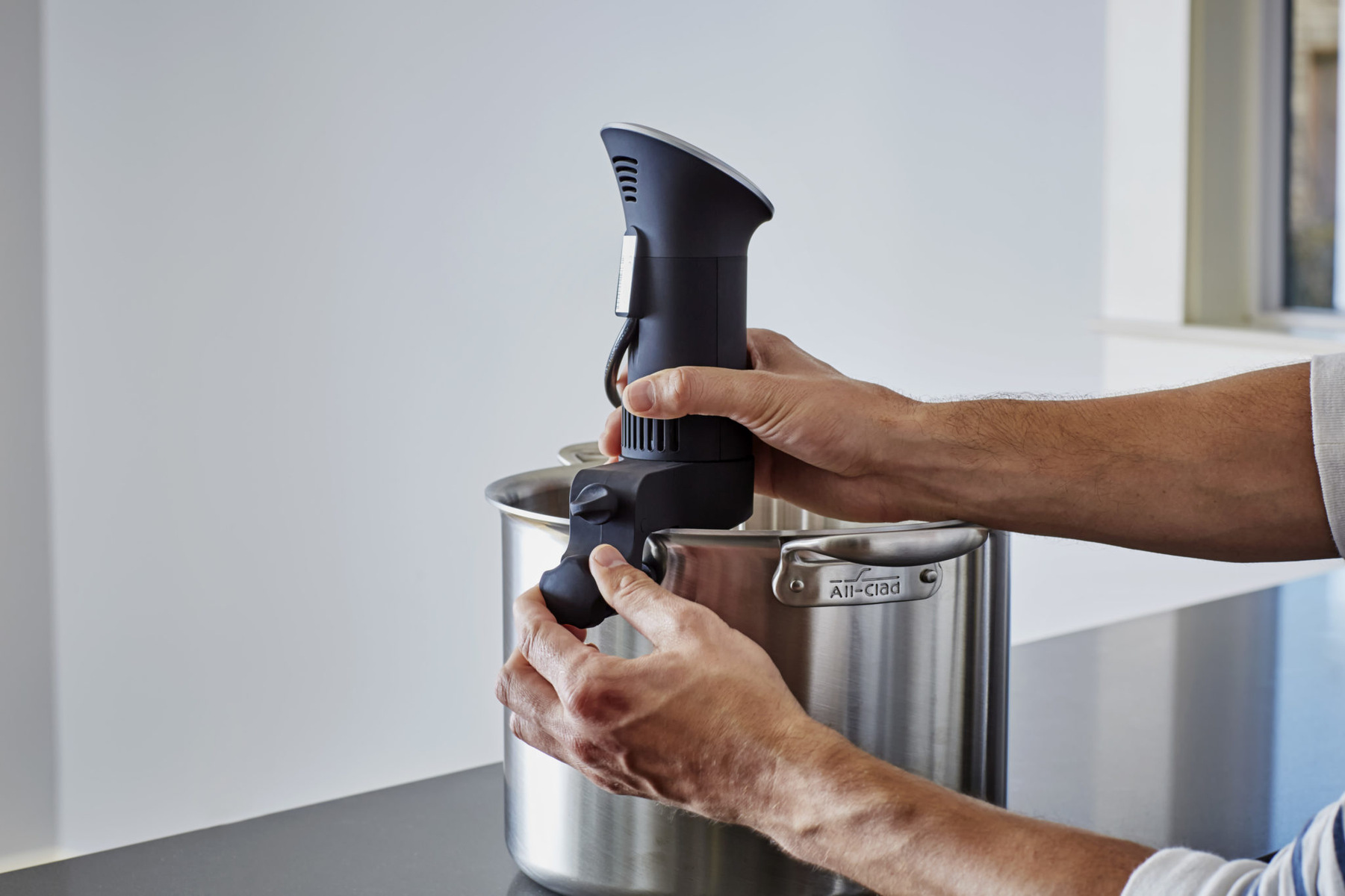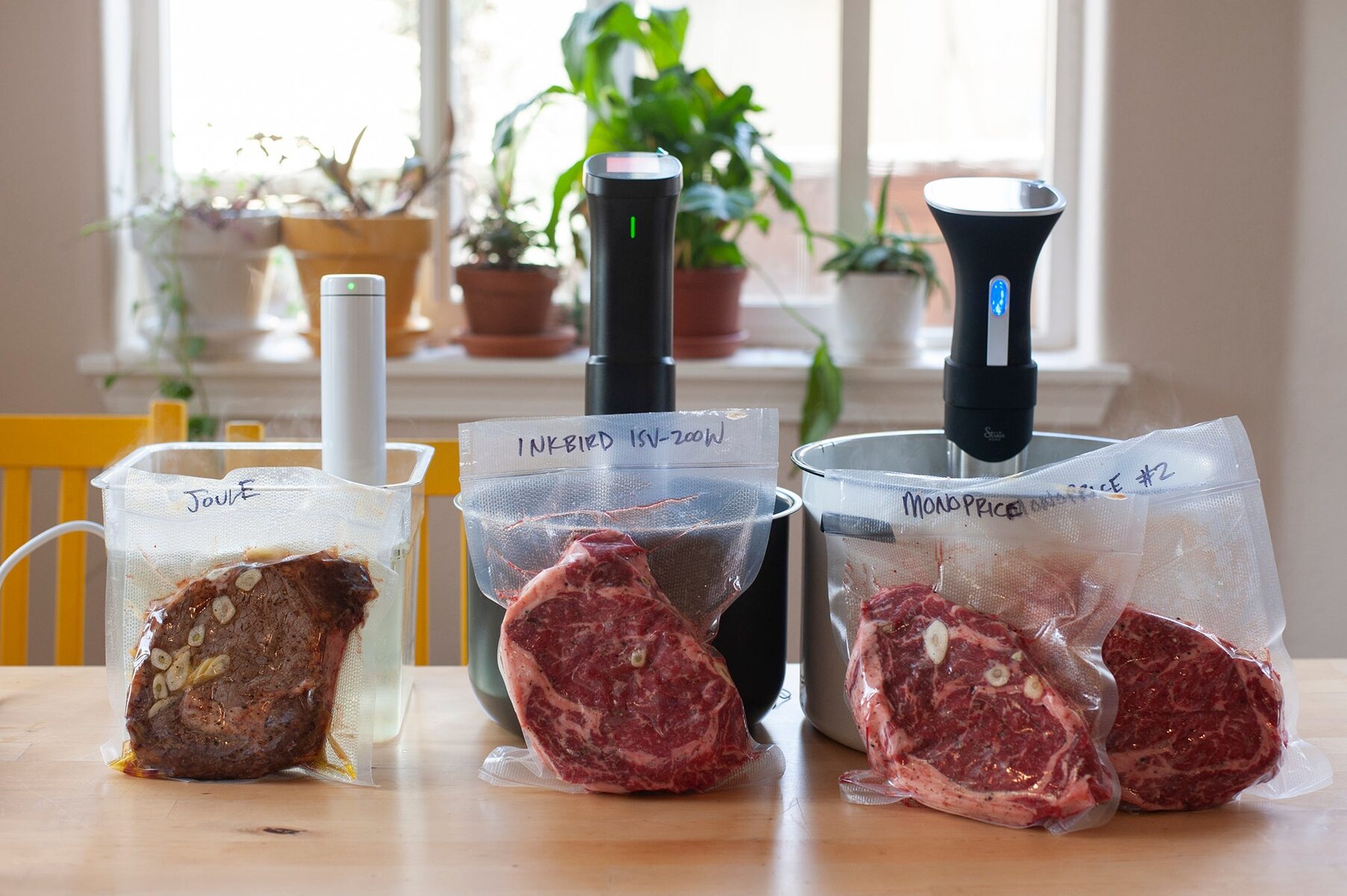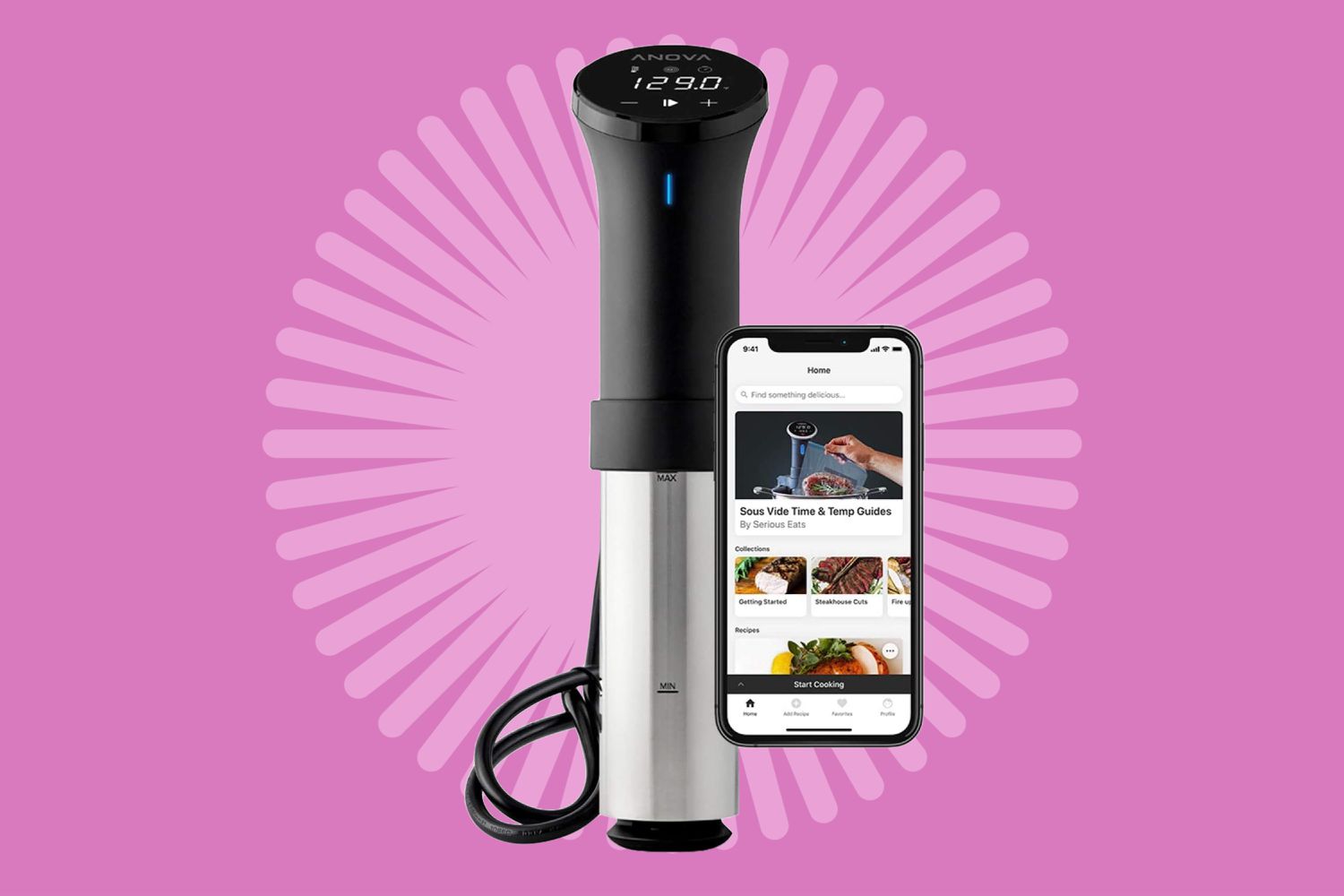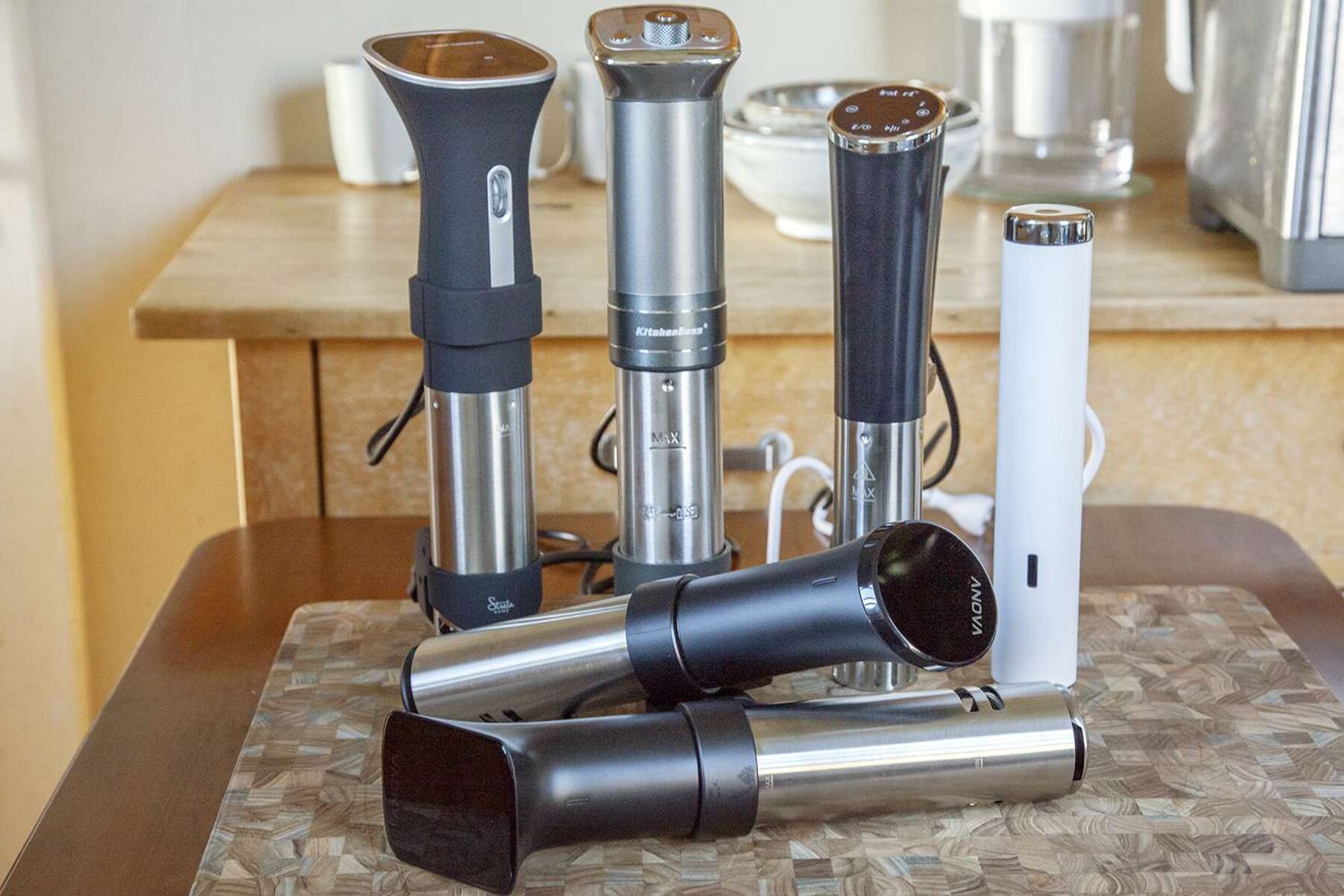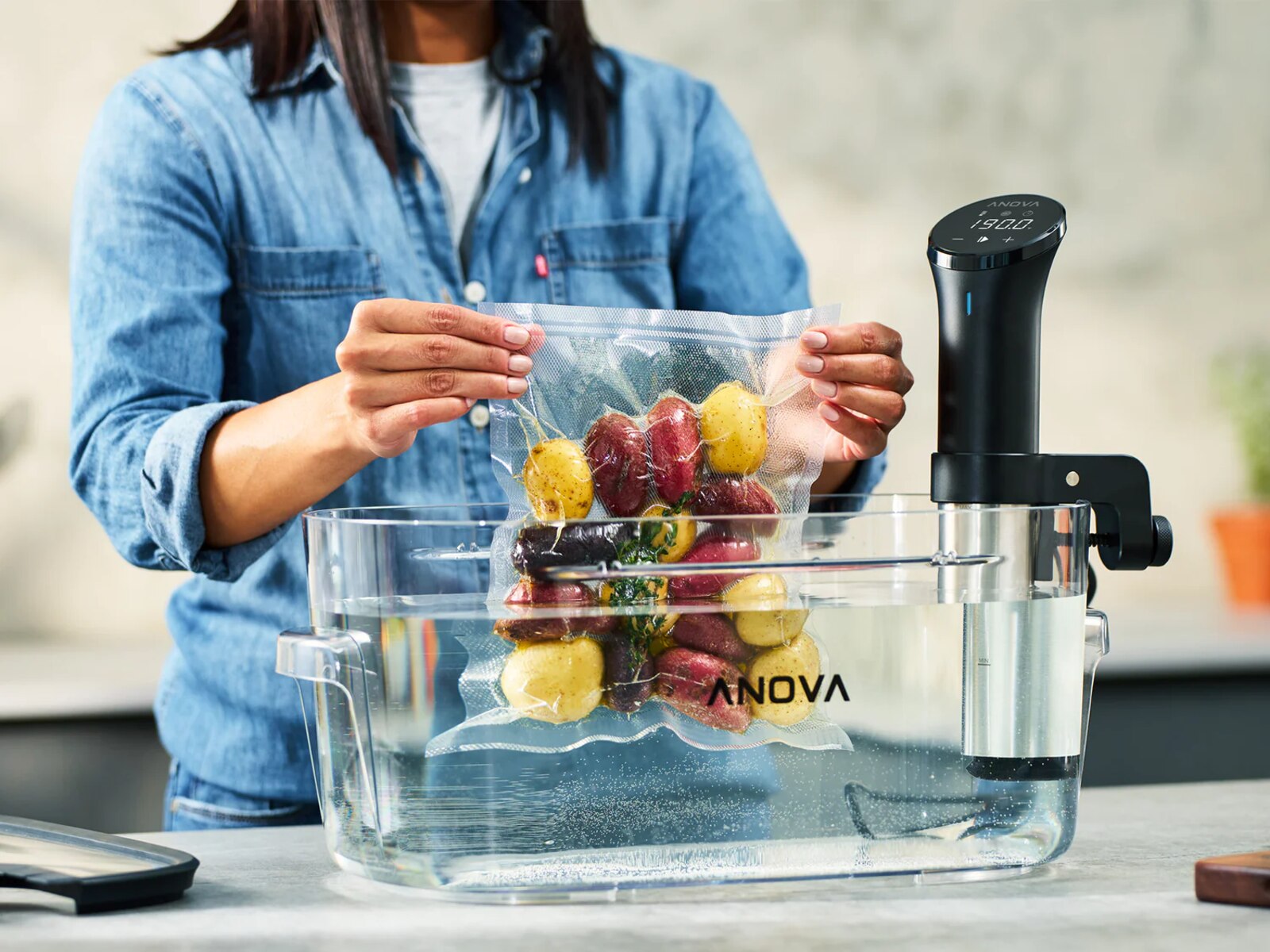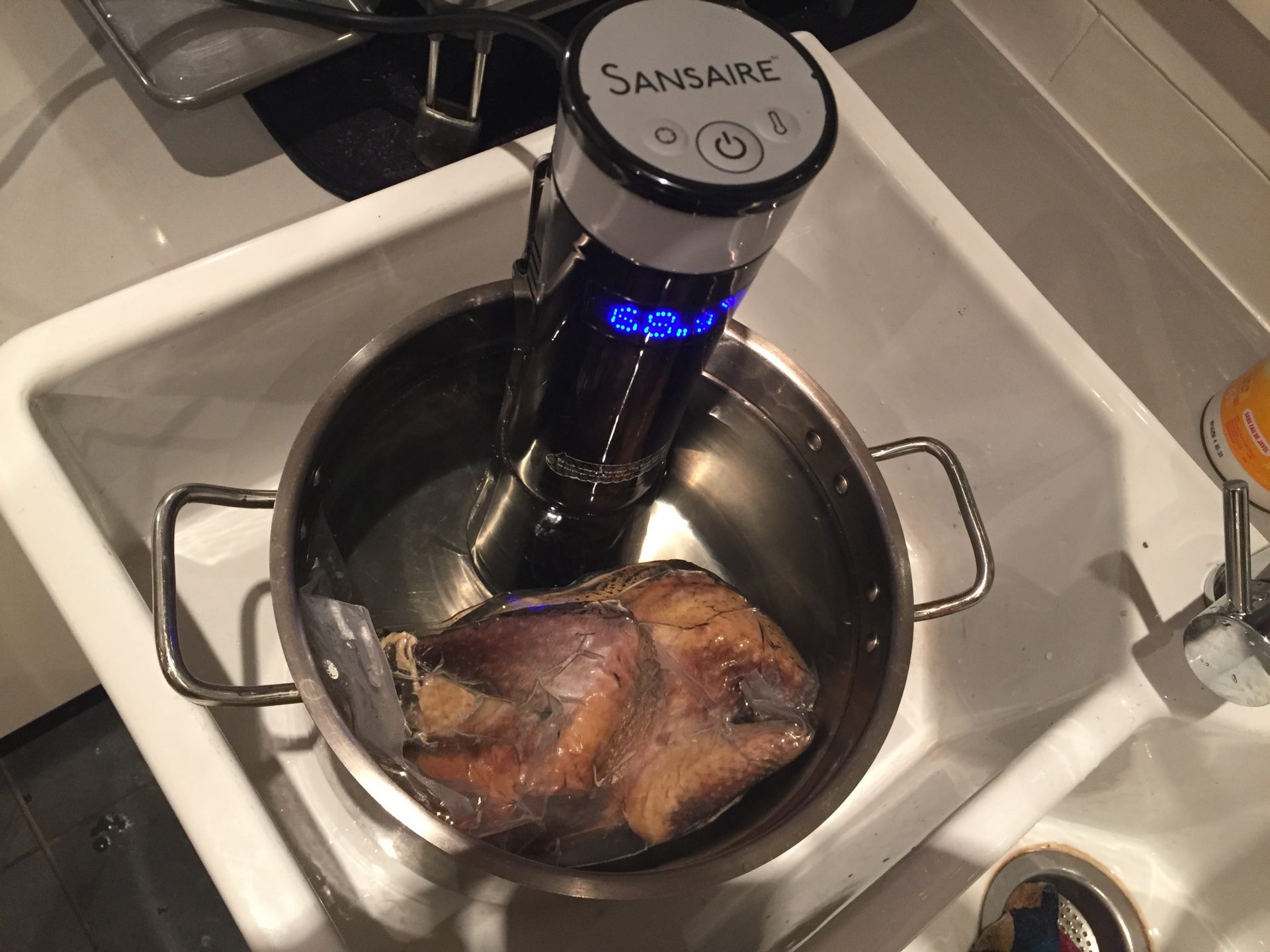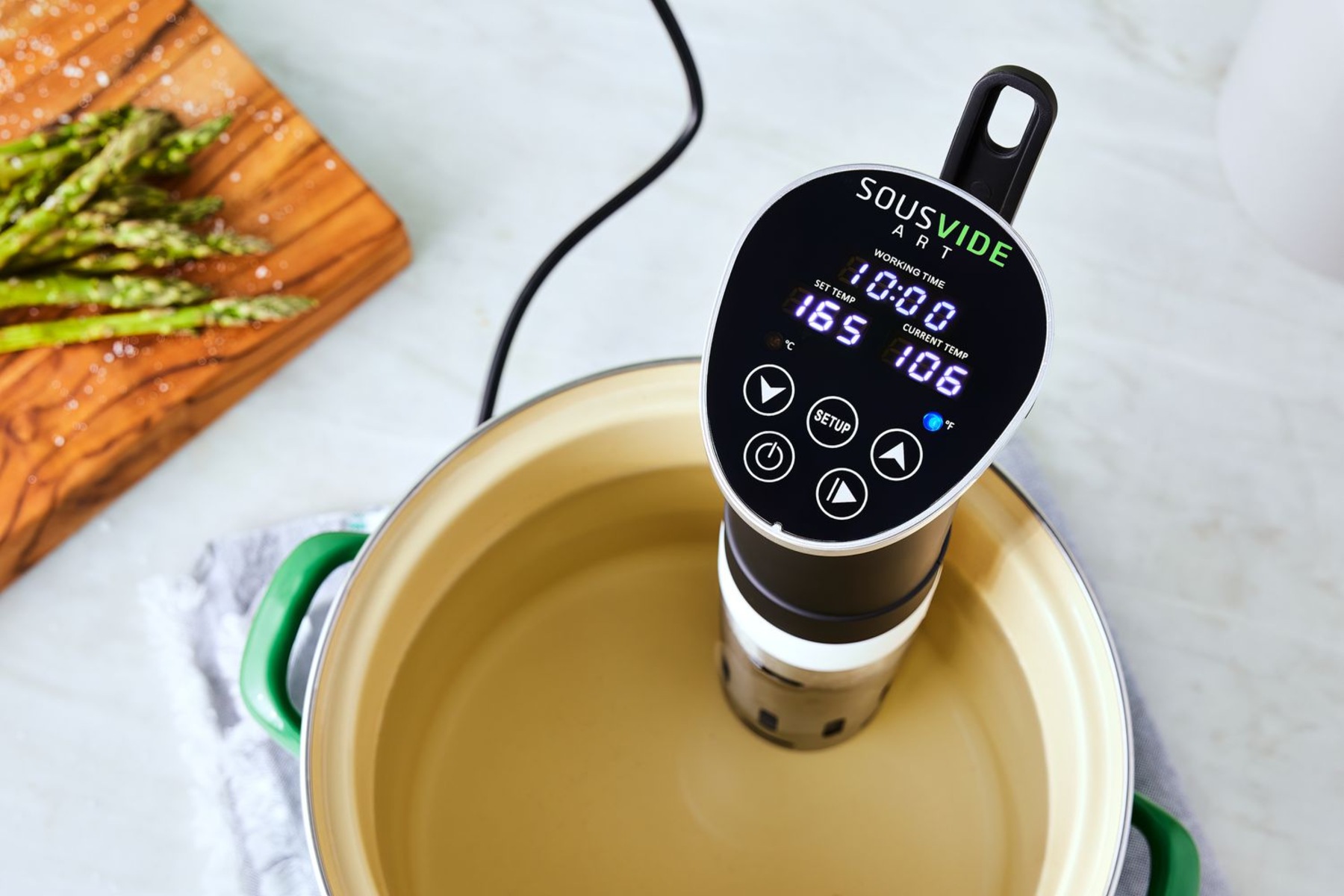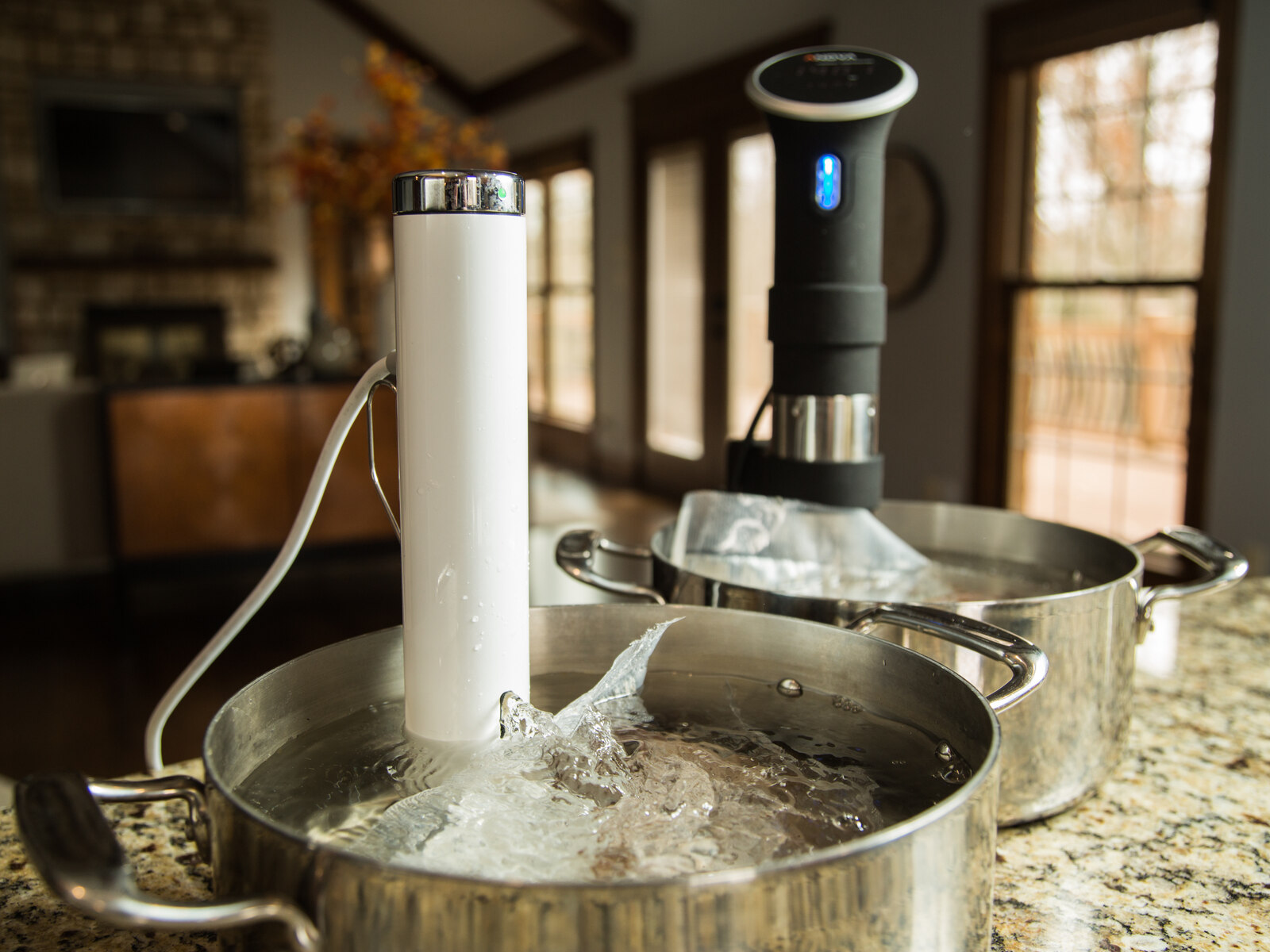Introduction
Welcome to the world of sous vide cooking! If you’re a culinary enthusiast, chances are you’ve heard of this innovative cooking method that promises restaurant-quality results. Sous vide, which means “under vacuum” in French, involves cooking food in a precisely controlled water bath. One of the key components of sous vide cooking is the sous vide machine, which plays a vital role in achieving the perfect cooking temperature and texture for your dishes.
In this article, we will explore the impact of wattage in sous vide machines and understand why it is an important consideration when choosing the right equipment for your culinary adventures at home. We will delve into the factors that affect wattage consumption, compare the differences between high wattage and low wattage machines, and provide tips on how to choose the right wattage for your specific needs.
Understanding how much wattage a sous vide machine uses is crucial because it directly affects the time it takes for the water bath to reach and maintain the desired temperature. Additionally, wattage consumption can have an impact on your energy bills and the overall efficiency of your cooking process. By optimizing the wattage of your sous vide machine, you can ensure both precise cooking and cost-effectiveness.
So, if you’re ready to dig deeper into the world of sous vide cooking and learn about the role wattage plays in this culinary technique, let’s get started!
What is sous vide cooking?
Sous vide cooking is a cooking method that involves sealing food in an airtight bag and immersing it in a precisely controlled water bath. The food is cooked at a low and consistent temperature for an extended period, resulting in evenly cooked, tender, and flavorful dishes.
The sous vide technique was originally developed in France in the 1970s and has gained popularity among professional chefs and home cooks alike in recent years. Its precise temperature control allows for a level of consistency and doneness that is hard to achieve with traditional cooking methods.
Unlike other cooking methods where the temperature of the cooking environment is higher than the desired internal temperature of the food, sous vide cooking uses a water bath that is set to the exact temperature you want the food to reach. This eliminates the risk of overcooking or undercooking and ensures that the food is cooked to perfection every time.
One of the key benefits of sous vide cooking is its ability to retain the natural juices and flavors of the ingredients. As the food is cooked in a sealed bag, it locks in moisture, resulting in succulent and tender dishes. The slow cooking process also allows the flavors to intensify and develop, resulting in rich and complex taste profiles.
Sous vide cooking is versatile and can be used for a wide range of ingredients, including meats, fish, vegetables, and even desserts. It is particularly popular for cooking proteins like steak, chicken, and fish, as it ensures an even cook from edge to edge and prevents overcooking and drying out.
Overall, sous vide cooking provides a precise and foolproof method of cooking that results in consistent, restaurant-quality dishes. So whether you’re a seasoned chef looking to enhance your culinary skills or a home cook looking to elevate your meals, sous vide cooking is a technique worth exploring.
How does a sous vide machine work?
A sous vide machine, also known as an immersion circulator, is a crucial tool for sous vide cooking. It works by circulating and heating water to a precise temperature, creating a controlled environment for cooking food.
The machine consists of a heating element, a water pump, and a temperature control system. It is designed to be submerged in a water-filled container, such as a pot or a sous vide container. Once the machine is set up and turned on, it begins to heat the water to the desired temperature.
The heating element in the sous vide machine is responsible for raising the water temperature. It is designed to maintain a constant temperature within a very narrow range, typically within 0.1°C or 0.2°F. This precision is crucial for achieving consistent and reliable results in sous vide cooking.
The water pump in the sous vide machine circulates the water in the container, ensuring that there is a consistent temperature throughout. This circulation helps to distribute heat evenly around the food, preventing any hot or cold spots and ensuring uniform cooking.
The temperature control system in the sous vide machine allows the user to set the desired cooking temperature and time. The machine continuously monitors the water temperature and adjusts the heating accordingly to maintain a stable environment for cooking. Some advanced sous vide machines even have built-in Wi-Fi or Bluetooth connectivity, allowing users to control and monitor the cooking process through a smartphone app.
Once the water has reached the set temperature, the food is placed in a vacuum-sealed bag or a resealable bag with the air removed. The bag is then submerged in the water bath, and the sous vide machine maintains the water temperature while cooking the food for the specified time. The precise temperature control ensures that the food is cooked evenly and to the desired level of doneness.
Overall, a sous vide machine provides the necessary tools to create the ideal cooking environment for sous vide cooking. It allows for precise temperature control, consistent heat distribution, and effortless monitoring of the cooking process, making it an essential device for anyone wanting to explore the art of sous vide cooking.
Importance of wattage in a sous vide machine
Wattage is a critical factor to consider when selecting a sous vide machine as it directly impacts the performance and efficiency of the device. The wattage of a sous vide machine refers to the amount of power it consumes, which affects the speed at which the water bath reaches and maintains the desired temperature.
A higher wattage sous vide machine will heat the water bath faster compared to a lower wattage one. This is particularly important if you have time constraints or prefer a quick cooking process. A higher wattage machine can also handle larger volumes of water more effectively, which is beneficial when cooking for a larger group or preparing a substantial amount of food.
On the other hand, a lower wattage sous vide machine may take longer to heat the water, and it may struggle to maintain the temperature in large water baths. However, lower wattage machines tend to be more energy-efficient, resulting in lower energy consumption and potentially reduced electricity costs in the long run.
It is important to note that the wattage of a sous vide machine alone does not determine its overall performance and quality. Other factors such as the insulation of the machine, temperature accuracy, and build quality also play significant roles. Nevertheless, wattage remains an essential consideration for anyone who wants to optimize their cooking time and energy usage.
Choosing the appropriate wattage for your sous vide machine depends on your specific needs and preferences. If you prioritize speed, efficiency, and the ability to handle larger water baths, a higher wattage machine might be the way to go. However, if energy efficiency and cost savings are more important to you, a lower wattage machine may be a better choice.
Ultimately, it is crucial to strike a balance between wattage and other features when selecting a sous vide machine. Consider your cooking requirements, the size of the water baths you will be using, and your energy usage preferences to find the ideal wattage that suits your needs.
Factors that affect wattage consumption
Several factors can influence the wattage consumption of a sous vide machine. Understanding these factors is crucial when considering the energy efficiency and performance of the device.
1. Size of the water bath: The larger the volume of water in the container, the more energy will be required to heat and maintain the desired temperature. A sous vide machine with a higher wattage will be able to handle larger water baths more effectively, while a lower wattage machine may struggle to maintain consistent temperatures in larger volumes of water.
2. Target temperature: The temperature at which you want to cook your food will affect the wattage consumption. If you set a higher target temperature, the sous vide machine will require more power to achieve and maintain that temperature. Conversely, lower temperatures will require less power.
3. Insulation of the machine: The insulation properties of the sous vide machine can significantly impact wattage consumption. A well-insulated machine will retain heat more effectively, requiring less energy to maintain the desired temperature. On the other hand, a poorly insulated machine may lose heat and require more power, leading to higher wattage consumption.
4. Duration of the cooking process: The length of time you plan to cook your food will also affect wattage consumption. If you have a long cooking period, the sous vide machine will need to provide a consistent heat source for an extended period, resulting in higher overall wattage consumption.
5. Ambient room temperature: The temperature of the room where the sous vide machine is operating can influence the energy consumption. If the room is colder, the machine may need to work harder to heat the water, leading to higher wattage consumption. Conversely, operating the machine in a warmer environment may reduce the energy required.
Considering these factors is important to optimize the performance and energy efficiency of your sous vide machine. By understanding how these variables impact wattage consumption, you can make informed decisions about the size of your water bath, the target temperature, and the cooking duration to achieve the desired results while minimizing energy usage.
Typical wattage range for sous vide machines
Sous vide machines come in a range of wattage options to cater to different cooking needs and preferences. While specific wattage values may vary among different models and brands, there is a typical range that most sous vide machines fall within.
On the lower end of the spectrum, you will find sous vide machines with wattages between 800 to 900 watts. These machines are suitable for smaller water baths and are generally more energy-efficient. They may take longer to heat the water but can still maintain a consistent temperature during the cooking process.
In the mid-range, there are sous vide machines with wattages between 900 to 1200 watts. These machines offer a good balance between speed and efficiency. They can handle larger water baths, making them suitable for cooking larger quantities of food. They also provide faster heating times compared to lower wattage models.
On the higher end, there are sous vide machines with wattages exceeding 1200 watts. These machines are powerful and designed for professional use or for those who prioritize speed and the ability to handle very large water baths. They can rapidly heat the water to the desired temperature, allowing for quicker cooking times and accommodating large food quantities.
It’s important to note that wattage alone does not determine the overall performance or quality of a sous vide machine. Other factors such as insulation, temperature accuracy, and build quality also play significant roles. Therefore, it’s essential to consider the wattage in conjunction with these factors when selecting a sous vide machine.
When deciding on the wattage range that suits your needs, consider the size of the water baths you will be using, the volume of food you will be cooking, and your desired cooking speed. If you plan to cook small portions or have time to spare, a lower wattage machine may be sufficient. However, if you frequently cook for larger groups or prioritize quicker cooking times, a higher wattage machine might be more suitable.
It’s worth noting that different wattages may also affect the price range of sous vide machines. Higher wattage machines tend to be more expensive due to their increased power capabilities. Consider your budget in relation to your cooking requirements when making your final choice.
High wattage vs low wattage sous vide machines
When it comes to sous vide machines, there are both high wattage and low wattage options available in the market. Each type has its own advantages and considerations, depending on your specific cooking needs and preferences.
High wattage sous vide machines, typically exceeding 1200 watts, offer several benefits. Firstly, they provide rapid heating capabilities, allowing the water bath to reach the desired temperature quickly. This is particularly advantageous when you’re short on time or prefer faster cooking. High wattage machines are also well-suited for handling larger water baths, making them suitable for cooking larger quantities of food or for entertaining larger groups. Additionally, their powerful heating elements ensure consistent heat distribution and temperature control throughout the cooking process, resulting in precise and reliable culinary outcomes.
On the other hand, low wattage sous vide machines, typically ranging from 800 to 900 watts, have their own advantages. One of the key benefits is their energy efficiency. Low wattage machines consume less power, resulting in lower electricity usage and potentially reduced energy costs. They are often more economical in the long run, especially if you frequently use your sous vide machine. Additionally, low wattage machines can still provide reliable and consistent cooking results, particularly in smaller water baths or when cooking smaller portions.
When deciding between a high wattage and low wattage sous vide machine, it is essential to consider your specific cooking requirements. If you frequently cook larger quantities of food or need to quickly heat up large water baths, a high wattage machine may be the better choice. However, if you prioritize energy efficiency, plan to cook smaller portions, or have more time for the cooking process, a low wattage machine may be more suitable for you.
It’s important to note that wattage is just one factor to consider when selecting a sous vide machine. Other factors such as insulation, temperature control, build quality, and additional features are also crucial in determining the overall performance and quality of the machine.
Ultimately, choosing between a high wattage and low wattage sous vide machine depends on your unique needs, preferences, and budget. Consider the size of your water baths, the volume of food you will be cooking, your desired cooking speed, and your energy usage priorities to make an informed decision that will best meet your culinary requirements.
How to choose the right wattage for your needs
Choosing the right wattage for your sous vide machine is essential to ensure optimal performance and efficiency. To determine the appropriate wattage for your needs, consider the following factors:
1. Cooking Frequency: If you use your sous vide machine frequently, especially for larger quantities of food, a higher wattage machine may be more suitable. It can handle larger water baths and provide faster heating times, accommodating your cooking needs more efficiently. However, if you use your sous vide machine sporadically or for smaller portions, a lower wattage machine may be sufficient.
2. Water Bath Size: The size of the water bath you typically use is another important consideration. A higher wattage machine is better equipped to handle larger water baths, ensuring consistent temperature control in a larger cooking volume. Conversely, a lower wattage machine may struggle to maintain temperatures in larger water baths, leading to longer heating times and less efficient cooking.
3. Desired Cooking Speed: If you prefer shorter cooking times, a high wattage sous vide machine is the way to go. It can heat the water bath quickly, reducing the overall cooking duration. However, if cooking speed is not a primary concern for you, a lower wattage machine can still deliver satisfactory results, albeit with slightly longer cooking times.
4. Energy Efficiency: If energy efficiency is a priority for you, a low wattage machine may be more suitable. Lower wattage machines consume less power, resulting in lower electricity usage and potentially reduced energy costs over time. They are a greener option and can be beneficial if you aim to minimize your environmental impact.
5. Budget Considerations: Wattage can also impact the price range of sous vide machines. Higher wattage machines tend to be more expensive due to their enhanced power capabilities. Consider your budget and balance it with your cooking requirements when making your final choice.
When choosing the right wattage for your needs, it’s important to remember that wattage is just one aspect of a sous vide machine. Consider other factors such as insulation, temperature accuracy, build quality, and additional features to make a well-rounded decision.
By considering your cooking frequency, water bath size, desired cooking speed, energy efficiency, and budget, you can select a sous vide machine with the appropriate wattage that will meet your specific needs and preferences.
Energy efficiency tips for using a sous vide machine
While sous vide cooking offers numerous benefits, it’s important to use your sous vide machine efficiently to minimize energy usage and reduce environmental impact. Here are some energy efficiency tips to consider:
1. Plan Ahead: Preparing your ingredients in advance can help minimize the time and energy spent on heating the water bath. Prepping the food, seasoning, and vacuum-sealing it beforehand allows you to start the cooking process right away, reducing overall cooking time.
2. Use Insulation: Insulating your water bath can help retain heat, reducing the energy needed to maintain the desired temperature. Cover your cooking container with a lid or use an insulation jacket specifically designed for sous vide cooking. This will prevent heat loss and promote temperature stability.
3. Optimize Water Level: Using the right amount of water can help conserve energy. Fill the water bath to the appropriate level based on your food quantity, ensuring it covers the ingredients without excessive water volume. This allows for efficient heat transfer and reduces energy waste.
4. Invest in Energy-Efficient Equipment: When purchasing a sous vide machine, consider models that are designed with energy efficiency in mind. Look for machines with energy-saving features, such as automatic shut-off timers or power-saving modes that reduce energy consumption when not in use.
5. Utilize Multi-Tasking: Take advantage of the sous vide’s precision and reliability to cook multiple ingredients simultaneously. By selecting ingredients that require similar temperatures and cooking times, you can optimize energy usage by using a single water bath for several dishes.
6. Experiment with Food Placement: Experimenting with the placement of your vacuum-sealed food bags can optimize heat transfer and reduce energy consumption. Distribute the bags evenly throughout the water bath, allowing for consistent heating and minimizing the need for excessive energy to reach the desired temperature.
7. Good Temperature Control: Monitoring and maintaining the desired temperature accurately is crucial for energy-efficient sous vide cooking. Use a thermometer to ensure the water bath remains at the correct temperature throughout the cooking process. This avoids excessive heating and energy waste.
8. Clean and Maintain Your Equipment: Regularly clean and maintain your sous vide machine to ensure its optimal performance. A clean and properly functioning machine will operate more efficiently, reducing energy waste and prolonging its lifespan.
By implementing these energy efficiency tips, you can enjoy the benefits of sous vide cooking while minimizing your energy consumption. Contributing to a more sustainable kitchen not only reduces your carbon footprint but also helps you save on energy costs in the long run.
Conclusion
Sous vide cooking has revolutionized the way we approach culinary techniques, and the wattage of a sous vide machine plays a crucial role in achieving the perfect results. The wattage determines the speed at which the water bath reaches and maintains the desired temperature, as well as the machine’s energy efficiency.
When selecting a sous vide machine, it’s important to consider factors such as cooking frequency, water bath size, desired cooking speed, energy efficiency, and budget. This will help you determine the appropriate wattage that aligns with your specific needs and preferences.
High wattage sous vide machines offer faster heating times and the ability to handle larger water baths, which is advantageous for those who frequently cook larger quantities of food or have time constraints. On the other hand, low wattage sous vide machines excel in energy efficiency and are suitable for smaller portions or those who prioritize reducing their energy consumption.
Energy efficiency can also be enhanced through proper planning, insulation use, optimizing water levels, investing in energy-efficient equipment, multi-tasking, experimenting with food placement, maintaining temperature control, and regular equipment maintenance.
By considering these factors and implementing energy efficiency tips, you can make the most of your sous vide machine while minimizing energy waste and reducing your environmental impact. Whether you’re a culinary enthusiast or a home cook looking to elevate your meals, understanding the importance of wattage and adopting energy-efficient practices will contribute to a more sustainable and enjoyable cooking experience.







